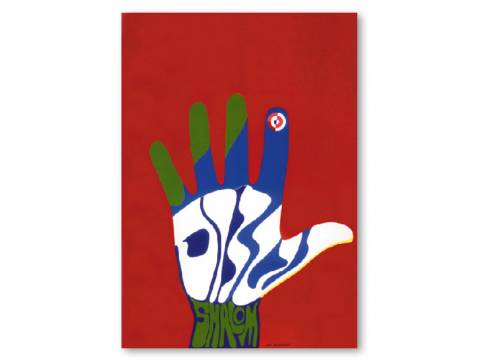ABSTRACT
Established in 1998, ‘Holy Land Trust’ (HLT) serves to empower the Palestinian community in Bethlehem to discover its strengths and resources to confront the present and future challenges of life under occupation. The staff, through a commitment to the principles of nonviolence, seeks to mobilize the local community, regardless of religion, gender, or political affiliation, to resist oppression in all forms and build a model for the future based on justice, equality, and respect.
his article places the work of HLT in the literature of nonviolent action and amid the nonviolent movement set by predecessors in the tumultuous history of Palestinian-Israeli relations. HLT programs and projects are presented to demonstrate the progression of nonviolent resistance from lofty goals to strategic empowerment. In a region so often defined by extremes, HLT embodies the Palestinian nonviolent resistance movement.
Issue ID: 05
July 2013
Gustav Landauer
anarchico ebreo tedesco
ABSTRACT
Comics and graphic novels about the Arab-Israeli conflict constitute a small, but constantly expanding sub-genre. Most of them are statements for one of the two opposing sides and only very few comic book authors use their skills to contribute to mutual understanding, tolerance and peace. After discussing the value of comics as educational and peace-building tools, the article demonstrates how comics can, under the condition that the concerned grousp can access them, contribute to peace-building by briefly discussing the works of non-Israeli and -Palestinian authors, as well as by analyzing in depth comics by Israeli and Palestinian authors Uri Fink, Galit and Gilad Seliktar, and Samir Harb.
Conflicts of Memory
The Reception of Holocaust Films and TV Programmes in Italy, 1945 to the Present
ABSTRACT
Since the summer of 2000, the Israeli-Palestinian conflict has been going through rough times on both the political and military levels. This generally applies as well to societal collaboration between the parties. Despite this multi-level gloomy state of affairs, one type of societal collaboration flourishes: addressing the historical narratives of the conflict. Since the early 2000s, nine such projects have been conducted by Palestinians and Israeli-Jews: PRIME, ‘Shared Histories,’ ‘Circles of Knowledge,’ ‘Zochrot,’ ‘History’s Double Helix,’ ‘Shared Narratives,’ ‘Van Leer,’ ‘IHJR,’ and ‘Gabay-Kazak.’ This article assembles for the first time these projects and discusses them methodologically using: 1) interviews conducted with the directors of most of the projects, 2) other studies, and 3) primary sources (the projects’ publications). It describes the projects, highlights the importance of presenting them to the societies of both parties, and discusses their characteristics as bottom-up projects. It also explains the conservative orientation of official institutions, leading to a lack of similar top-down projects; the differences between contemporary and past aspects of the conflict; and the uniqueness and special contribution of such pre-resolution activity. Moreover, the article explains the prevalence of this activity since the early 2000s, lists the positive effects of the projects on the involved parties, and explains how the fact that they were conducted by the rival parties contributed to their success.

